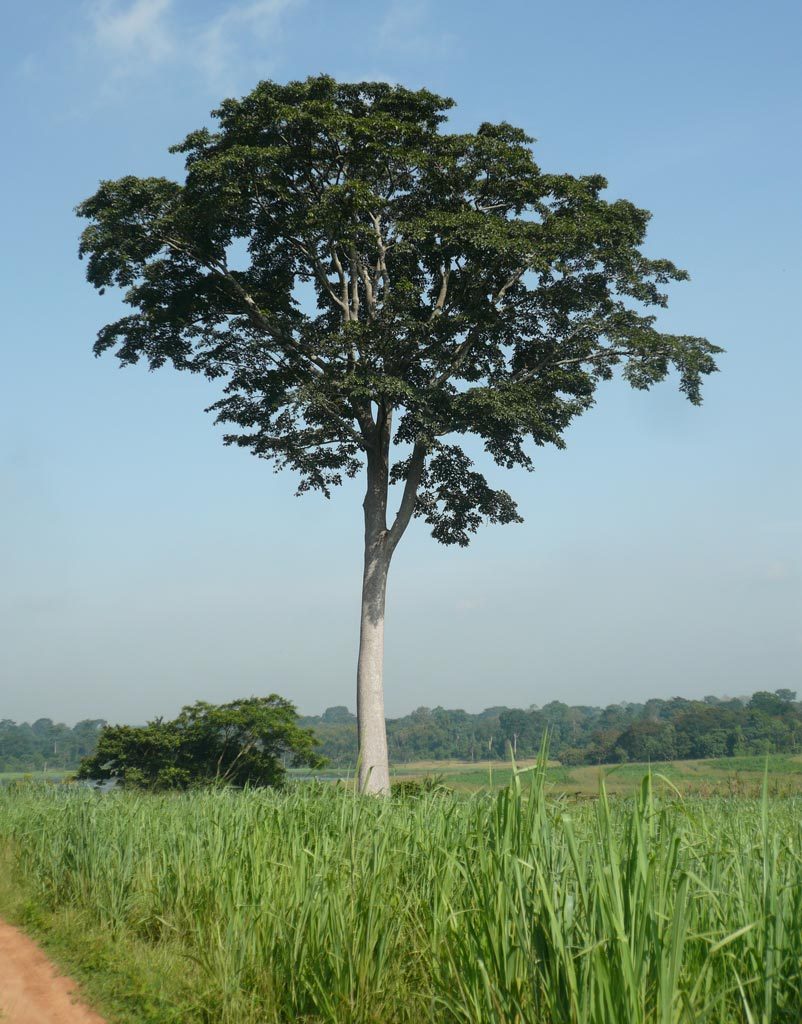
23 Jul Milicia excelsa
Scientific name: Milicia excelsa Welw. C.C.Berg.
Synonyms: Chlorophora excelsa (Welw.) Benth.
Family: Moraceae.
Distribution/conservation status: widely distributed in different forest types but more common in drier forests. Near threatened (NT) and declining due to heavy exploitation for timber.
Common names: African teak (English), Iroko (Yoruba), Loko (Hausa), Oje (Igbo), Uloko (Edo).
Fruits/Seeds: ellipsoid, wrinkled and green when ripe, containing many small, sticky, light brown seeds.
Fruiting time: February – March.
Seed collection: collect fallen fruits from under the mother tree and soak in water for two hours. Crush to extract the seeds which fall as sediment in the water. Strain to separate seeds from pulp. Type of seed: recalcitrant, rapidly losing viability.
Sowing method: mix seeds with river sand immediately after extraction. Scatter on a seedbed, covering thinly with a layer of sand. Seeds should be sown immediately after extraction.
Sowing medium: equal parts top soil and river sand.
Germination period: 6 – 21 days.
Germination percentage: 95 – 100%.
Growth/development: transplant seedlings into pots 3 weeks after germination. Seedlings are fast growing and can be planted out in the field 4 months after germination. Male trees start flowering after c. 10 years while females flower for the first time after 15 years.1 It is not possible to tell males and females apart.
Note: iroko fruits are a favourite food of fruits bats which disperse seeds widely. Seedlings in open sunny positions are attacked by iroko gall flies (Phytolyma lata) which destroy the growing point of each shoot and cause stunting or death. Care must be taken to position seedlings in full shade and high humidity to prevent attack.

Iroko Milicia excelsa with IITA Forest Reserve in the background

